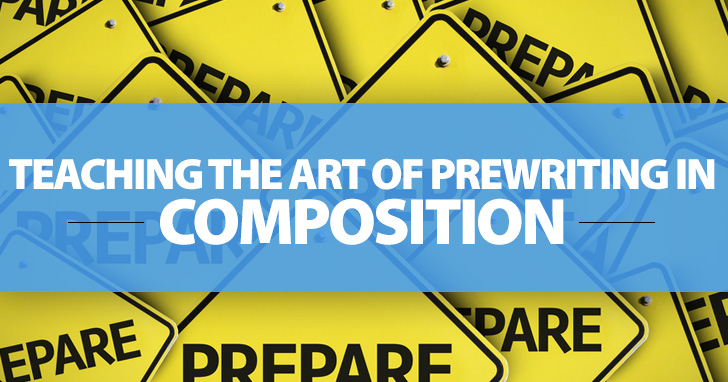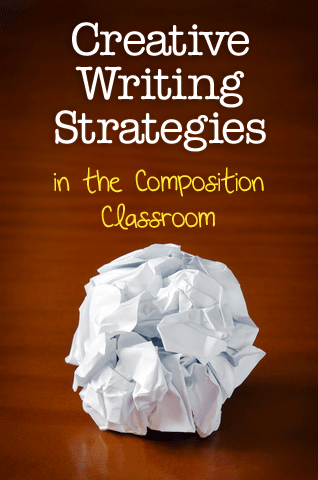Teaching the Art of Prewriting in Composition


And indeed they are different forms, that utilize different grammar - creative writing and fiction uses more of the past tense, for example. And creative writers are used to being admonished not to use the passive voice in their sentences, to make their writing more active and personal; on the other hand, academic writing relies heavily on the passive voice as it is impersonal, and the agent of the action is often deemphasized, valued qualities in academic writing. The vocabulary is even different, with academic essay writing relying more on academic, Latin-based vocabulary; such vocabulary is usually discouraged in creative writing, which tends to focus on more accessible words that might realistically be used by the narrator and other characters in the story. Just as an example of this difference, below follow opening lines of a fiction story and a nonfiction article, both written by me:
* My old cellmate Ray was waiting behind the store in his beat-up Caddie when I finally looked for him there.
* Because of the recent focus on “basic” skills instruction in the primary grades, that is, word recognition and decoding skills, many students come to higher grades able to decode quickly but not comprehend the words they read.
Probably no explanation is needed on which is which.
However, I have found that while the forms obviously differ, the processes to be similar in the two genres. Writing in both genres generally calls upon the following processes:

Both fiction and nonfiction writers go through a period of brainstorming. With a fiction writer, the focus is generally more on “What happened?” What happened after the narrator found Ray waiting for him behind the store? Did he get in the car with him, and why? It is in answering these questions that the story develops.
Brainstorming for nonfiction writers, however, is more topic-driven: it is, more “What do I want to write about? What compels me?”
Both fiction and nonfiction writers use visualization. As the author of the fiction piece, I want the writer to see and feel the old Caddie, how dust shows on its faded black paint, how the leather seats feel against the narrator’s legs on this hot August day. In nonfiction, I’m more concerned about making my argument: what points am I going to need to raise to convince my reader how critical student writing is?
Any writer, for fiction or nonfiction, is helped by reading aloud his or her work, to hear the sound of it, how the words and sentences are working together, to consider what might work better. Having students read aloud their work to each other is a rewarding experience, for the pleasure of hearing their own work and of getting and giving feedback.
Both nonfiction and fiction writing require research. Some people are surprised by this, but fiction writers have to do research. For example, I wrote a romance novel set in a Napa Valley winery, and for this I had to develop some expertise on wine. Research also can be reused and shared between the genres—I could someday write a piece about choosing wines, for example, or the history of the Napa Valley. Once you have done the research, you own the knowledge from it and can reuse it.
Quick writes involve jotting down everything about a topic that I know: What do I already know about wine, for example? What’s the basic process for making it? Who do I see as being the main characters in this winery story?
Journaling is also very helpful at the beginning stages, in getting and developing ideas. My journal is a word document on my desk top, and I jot both nonfiction and fiction ideas as they come to me along with any development I might have for that idea. My original notes for “Turning,” the fiction story whose opening line is above, had a conversation between the narrator and his old cellmate on the nature of assumptions—the narrator had assumed that the cellmate would be in front, not the back, of the store. I take similar notes on nonfiction pieces. The journal, as I see it, is a “dumping ground” for your ideas on a piece that may or may not make it into the final draft, so there’s no pressure for it to be excellent work at this stage.
After I’ve brainstormed and developed ideas, it’s time for an outline. Ray and the narrator actually have to go somewhere, and something has to happen, important enough to force some change in the narrator. That’s the expected form of a fiction story. Likewise, a nonfiction essay or article has an expected form: after discussing the problem of student writing, I’ve got to have a recommendation, however small, of what to do about it. An outline will keep the writer focused on moving the writing forward, not dally in the car forever, but actually take the story or essay somewhere.
After the outline is completed, the writer is now ready for a first draft, a “dirty” one—the goal is finishing the draft, of presenting the problem of student writing, of proposing a solution, of discussing expected outcomes. It doesn’t have to be perfect at this point or even particularly developed—the focus is on finishing. Developing and editing can come later.
Cut and paste is a word processing function very helpful in the writing process, after the first draft. The first draft is all about getting the material out of your head and onto paper. The second draft is more about rearranging and perfecting. Does the conversation about assumptions belong closer to the middle of the story, when the narrator starts to realize he has assumed far too many things about his cellmate? Does more discussion about a possible solution to the problem of student writing belong up front, right at the outset?
All writing, fiction and nonfiction, writing needs to go through a final editing, preferably by a disinterested set of eyes that has not seen the work before, checking the grammar, spelling, missing or repeated words, that even the most meticulous writer might miss problems in his own work.
Using students’ past experiences with creative writing, either in the class or otherwise, the teacher can develop the students’ composition/nonfiction skill and understanding of the writing process.